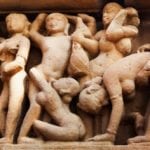 Weird Stuff
Weird Stuff  Weird Stuff
Weird Stuff  Our World
Our World 10 Ways Your Christmas Tree Is More Lit Than You Think
 Movies and TV
Movies and TV The 10 Coolest Stars to Set Sail on The Love Boat
 History
History 10 Things You Didn’t Know About the American National Anthem
 Technology
Technology Top 10 Everyday Tech Buzzwords That Hide a Darker Past
 Humans
Humans 10 Everyday Human Behaviors That Are Actually Survival Instincts
 Animals
Animals 10 Animals That Humiliated and Harmed Historical Leaders
 History
History 10 Most Influential Protests in Modern History
 Creepy
Creepy 10 More Representations of Death from Myth, Legend, and Folktale
 Technology
Technology 10 Scientific Breakthroughs of 2025 That’ll Change Everything
 Weird Stuff
Weird Stuff Ten Bizarre Facts About The Doge Meme
 Our World
Our World 10 Ways Your Christmas Tree Is More Lit Than You Think
 Movies and TV
Movies and TV The 10 Coolest Stars to Set Sail on The Love Boat
Who's Behind Listverse?

Jamie Frater
Head Editor
Jamie founded Listverse due to an insatiable desire to share fascinating, obscure, and bizarre facts. He has been a guest speaker on numerous national radio and television stations and is a five time published author.
More About Us History
History 10 Things You Didn’t Know About the American National Anthem
 Technology
Technology Top 10 Everyday Tech Buzzwords That Hide a Darker Past
 Humans
Humans 10 Everyday Human Behaviors That Are Actually Survival Instincts
 Animals
Animals 10 Animals That Humiliated and Harmed Historical Leaders
 History
History 10 Most Influential Protests in Modern History
 Creepy
Creepy 10 More Representations of Death from Myth, Legend, and Folktale
 Technology
Technology 10 Scientific Breakthroughs of 2025 That’ll Change Everything
10 Dark Moments In The History Of Satanism
Satan, Lucifer, Beelzebub, the Prince of Darkness—all names for the same dark, demonic figure who is pervasive and ubiquitous throughout the world and all of its religions. The Dark Lord has as many names and character traits as our creative minds can describe and assign to him. Throughout time, the Adversary has been different things to different people in different nations and different religions.
Since the dawn of human religious concept, people have sought supernatural explanations for world events. This leads naturally to people coming up with various interpretations of a dark figure or figures who they’ve used to explain loss, pain, hate, agony, death, misery, depression, and all manner of negative experiences. For most of human history, these figures were shunned, and believers fled them in repulsion and horror, but over time, we began to embrace these figures as telling and representative of the very real, very natural dark side of the human existence, which wasn’t possible until the victory of science and reason over superstition. From Angra Mainyu of ancient Persia to Hades of ancient Greece, from Beelzebub to Satan, here are ten monumental moments in the history of the dark figure known to the Christian religion as Satan.
10 Azazel
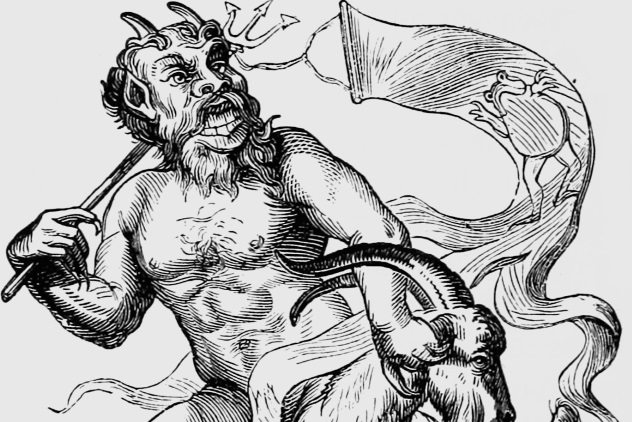
Azazel is one of the oldest devil figures in the history of the world. The Torah contains a few references to him.[1] He’s thought to be a goat-like demon figure and is referenced when God instructs the Israelites to give him an offering and also send two goats off into the wilderness for Azazel. Leviticus 16:10 reads: “But the goat on which the lot fell for Azazel shall be presented alive before the Lord to make atonement over it, that it may be sent away into the wilderness to Azazel.”
Azazel is the original (and literal) scapegoat figure, a demon who is often thought by modern interpreters to be an incarnation of Satan himself. He’s thought to be referenced in the Revelation verse 12:9, which reads: “And the great dragon was thrown down, that ancient serpent, who is called the devil and Satan, the deceiver of the whole world—he was thrown down to the earth, and his angels were thrown down with him.”
9 Angra Mainyu
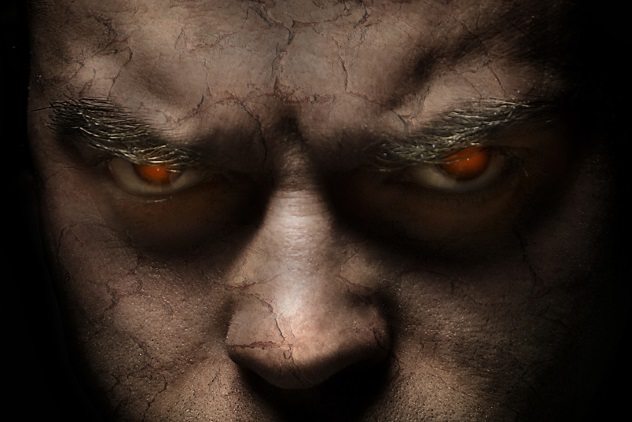
Zoroastrianism is an ancient Persian religion and the first to adopt a dualistic worldview that would be handed down to all other religions and be carried along with us to this day. Zoroastrianism started in what is now called Iran at least as early as 600 BC. Its fundamental premise is pretty simple and extremely common in religions throughout the world today: the idea of good and evil.
Zoroastrianism was founded by a prophet named Zoroaster, and his basic world conception was that there is a god who is good by the name of Ahura Mazda and a dark, evil entity named Angra Mainyu.[2] While Ahura Mazda lives in Heaven, a concept that’s as old as time immemorial when humankind first gazed upon the stars with wonder, Zoroastrianism is one of the first mentions of the concept of Hell—the dwelling place of Angra Mainyu. In the Zoroastrian religion, Angra Mainyu and Ahura Mazda fight one another on the world stage, controlling various forces. Angra Mainyu and Ahura Mazda are immortal beings who fight one another, but Ahura Mazda is the omnipotent God who, according to the religion, will ultimately win.
8 Hades
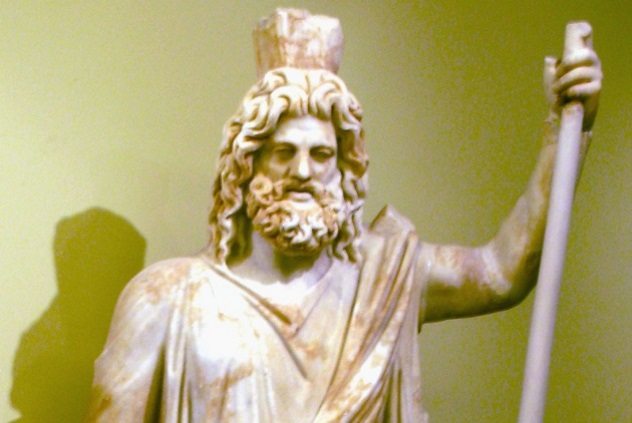
To the ancient Greeks, the prince of darkness and the underworld went by the name of Hades. Later, in ancient Rome, he would be called Pluto, but the two are really the same general dark figure. Hades is depicted by the ancient Greeks as uncaring, dark, and detached from the suffering of dead mortals. Hades supervised the judgments of the dead, though he did not personally administer punishments of torture to the damned.[3]
Hades generally rules and oversees the dead and the underworld, called the House of Hades, which is often also referred to as just Hades, and in the Greek translations of the Hebrew bible, “Hades” is the word used for Sheol. It’s safe to say that at the time, the Greeks and Jews considered Hades and Sheol to be equivalent, which would make Hades the figure roughly equal to the Abrahamic concept of Satan, as Sheol is the Hebrew name for the place of the dead.
Hades is described by the epic poet(s) named Homer as “pitiless,” “loathsome,” and “monstrous” and is the only god who did not reside, according to Greek mythology, on Mount Olympus but rather in the dark, shadowy underworld of the House of Hades.
7 Satan In The Bible
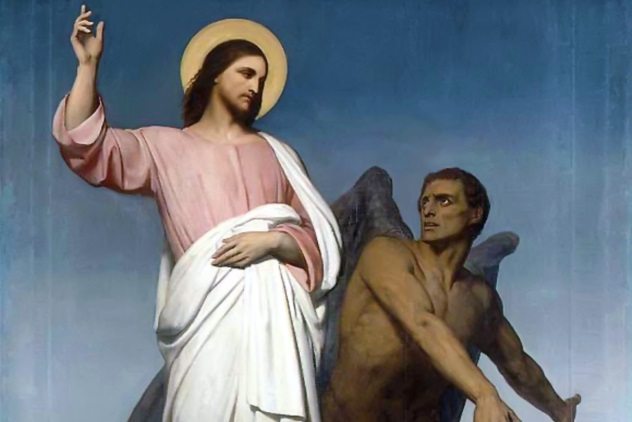
For a figure who’s so repulsive and ubiquitous throughout the world today in contemporary religion and thought, Satan himself isn’t mentioned in the Bible very much, particularly not by name, and Hell is mentioned even less. The references which have grown over the centuries into the figure we now call Satan mainly name a figure known as the Adversary. Now, because of complex translations, the Adversary isn’t necessarily a big, scary figure with red skin, a pointed tail, a pitchfork, and the rest of the defining characteristics we give the Prince of Darkness.
The words used often mean “accuser,” “prosecutor,” or sometimes even “false accuser,” as in the case of the mention of Satan (Adversary) in the Book of Job. Many, many words are used, as ancient Hebrew is a very different language from our own modern English or other languages, which makes rendering suitable definitions of each word difficult. Nevertheless, it’s safe to say that there’s a rich variety of meanings behind the different words used to describe the Adversary that are unfortunately lost in modern renditions of the text.
Even if he doesn’t show up a lot, the Dark Lord himself is nevertheless mentioned in the Bible by name several times, mostly in the New Testament, such as John 3:8, which reads, “The one who does what is sinful is of the devil, because the devil has been sinning from the beginning. The reason the Son of God appeared was to destroy the devil’s work.”[4] Even that in itself isn’t exactly unambiguous. James 4:7 says, “Submit yourselves, then, to God. Resist the devil, and he will flee from you.” Romans 16:20 reads, “The God of peace will soon crush Satan under your feet.” Altogether, the contemporaries of Christ mention Satan a lot more than He Himself does, which is relatively scarce.
The infamous temptation of Christ was the only major mention of Satan as a figure by Jesus in the Bible. There’s also the verse of Matthew 16:23, where Jesus turns to Peter and says, “Get behind me, you Satan! You are but a stumbling block to me,” though here, as is common throughout the Christian Bible, Satan seems more of a title than an entity. It seems that Christ refers to Satan as a mere symbol, representative of things that are sinful and vices that will lead men to pain and misery.
6 Early Christianity
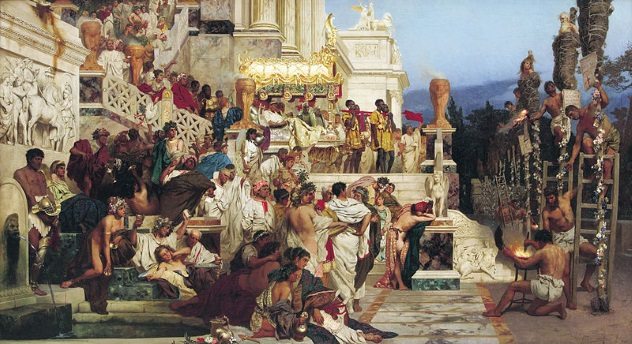
At first, Christians thought of Satan generally as a mere reflective representation, much like the symbolism Jesus Christ employs in the gospels to describe the dark parts within ourselves. It was during early Christianity that Satan really became an entity or character, and early Christians borrowed heavily from the references found in the Torah mentioning the Accuser and the Adversary to formulate a figure that was supposed to lead men astray. Satan quickly became an angel cast from Heaven, as was referenced from the Book of Job, where he is almost God’s sidekick, doing His dirty work as a balancing voice from the other side; the Devil himself is the Devil’s advocate in the Book of Job, but he does so on behalf of God. In Job, Satan basically talks God into putting this poor guy through Hell on Earth to test his faith.
The early Christians were under Roman occupation, constantly subjected to Roman law and custom against their will, and generally didn’t fit in with the world in which they found themselves. The best explanation possible at the time, it seemed, was that there was a deceiver who had led the vast majority of humankind astray, and he was responsible for the fact that people weren’t able to see the light of the gospels in large. This is where the great battle came from with references to Revelation, and since then, Christianity has had an official face for its enemy.[5]
5 The Divine Comedy

Dante’s famous poem the Divine Comedy was written between 1308 and 1320 and was the first work to really give Satan a definite face. The way Dante vividly described a hellish pit of fire in his Inferno portion of the poem, and his personification of Satan unlike any that had been yet dreamed up, radically changed the face of evil and the fundamental tenets of Christianity.[6] By the Middle Ages and the Renaissance period, Satan was becoming a real guy, rather than just the concept of being separated from God or far away from the Judeo-Christian teachings, as was traditionally taught.
The most famous, wicked line from the Divine Comedy to this day is the foreboding warning, as the poet’s main character approaches the gate of Hell and finds that it reads, “Abandon all hope ye who enter here.” Centuries later, this ominous foreshadowing would become, to some, an invitation.
4 Paradise Lost
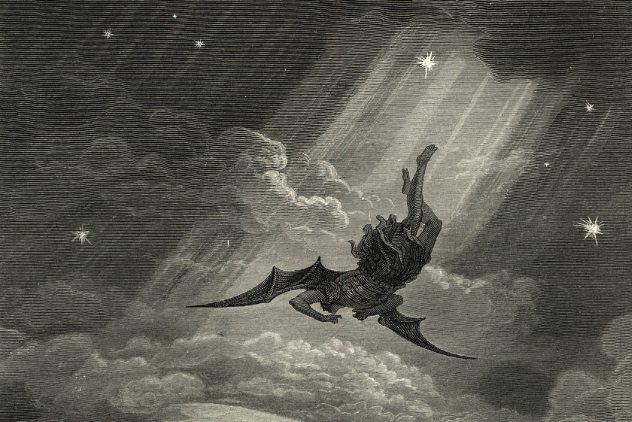
Paradise Lost was a poem published by the English poet John Milton in 1667. Milton’s goal was arguably to further expand upon the ideas of Satan, to put a face to him, and to, as a Christian himself, make an argument for God and against Satan. The poem reads like an epic, and one of the unfortunate consequences is that it backfired in a major way: Satan became the hero of the poem, rather than the Adversary.[7]
Centuries later, the Satan we find in Milton’s most famous work is relatable, strong, independent, and human. He’s a rebel unlike any other yet dreamed up, and people started to view him as like them as times and values changed in Western culture. Satan quickly became, for many, a symbol of rebellion against unjust authority in a quickly spreading world of secularism. The Adversary really defined the term “antihero,” as he was the protagonist with all of the traits of the hero, and most people fell in love with the character. Painting God himself as the tyrant and the angel Lucifer as merely demanding the rights of angels, one notable point in the poem is when Satan first speaks after losing the battle for Heaven and being shunned and condemned to the fiery blackness of Hell:
And thence in Heav’n call’d Satan, with bold words,
Breaking the horrid silence thus began.
If thou beest he; But O how fall’n! how chang’d
From him, who in the happy Realms of Light
Cloth’d with transcendent brightness didst out-shine
Myriads though bright: If he Whom mutual league,
United thoughts and counsels, equal hope
And hazard in the Glorious Enterprize,
Joynd with me once, now misery hath joynd
In equal ruin: into what Pit thou seest
From what highth fall’n, so much the stronger prov’d
He with his Thunder: and till then who knew
The force of those dire Arms? yet not for those,
Nor what the Potent Victor in his rage
Can else inflict, do I repent or change,
Though chang’d in outward lustre; that fixt mind
And high disdain, from sence of injur’d merit,
That with the mightiest rais’d me to contend,
And to the fierce contention brought along
Innumerable force of Spirits arm’d
That durst dislike his reign, and me preferring,
His utmost power with adverse power oppos’d
In dubious Battel on the Plains of Heav’n,
And shook his throne. What though the field be lost?
All is not lost; the unconquerable Will,
And study of revenge, immortal hate,
And courage never to submit or yield:
And what is else not to be overcome?
That Glory never shall his wrath or might
Extort from me. To bow and sue for grace
With suppliant knee, and deifie his power,
Who from the terrour of this Arm so late
Doubted his Empire, that were low indeed,
That were an ignominy and shame beneath
This downfall; since by Fate the strength of Gods
And this Empyreal substance cannot fail,
Since through experience of this great event
In Arms not worse, in foresight much advanc’t,
We may with more successful hope resolve
To wage by force or guile eternal Warr
Irreconcileable, to our grand Foe,
Who now triumphs, and in th’ excess of joy
Sole reigning holds the Tyranny of Heav’n.
Not only is the dark prince fighting against an unjust tyranny, but he’s also a very human character in that he seeks to make his existence in Hell a quite heavenly one with merely the power of his mind. The struggles we face on a daily basis are much more relatable to a figure who perseveres through his suffering to draw strength from it, the strength to continue to try to prosper, with powerful, relatable, and moving lines like, “The mind is its own place, and in itself can make a heaven of hell, a hell of heaven.” Satan, by the turn of the 1700s, was no longer the Adversary but was on his way to being considered a friend and, for some, a leader.
3 Occultism And Satanism

While Milton laid the groundwork for the figure, science and reason and their victory over superstition further did so by changing minds and ushering society into a new, secular, modern era; science necessitated an era where people no longer burned one another at the stake for fear of practicing witchcraft or having the flu. It seems that the teachings of the early Christians have come full circle, as people are generally led astray and relate much more often with indulgent evil than chaste good. Even the artistic depictions of Satan started becoming eerily humanlike and less the traditional horned-goat-with-seven-heads stuff told about in the Book of Revelation.
By the late 1800s, Satan was getting sexy, dark, mysterious, and sly . . . and he was becoming worshiped. He would offer you a drink and talk about your problems with you. Medieval culture was ripe with occultism and alternative philosophies of religion, so by this time, there was no shortage of history to draw upon for imagery and practice. The pentagram, for example, dates way back to the Middle Ages and has always been associated with witchcraft and practices that were less than Christian. While tracing the origins of Baphomet, the Satanic goat-headed figure, are difficult, the goat has long been a figure of knowledge and fertility, since the days of ancient Egypt, and Baphomet is a combination of two Greek words, baphe and metis, which mean “absorption of knowledge.”[8] Baphomet would be a major influence on Satanism, as Satanists often relinquish the idea of the otherworldly in favor of what they can touch and feel, what’s here and now, and what’s in this world.
2 ‘God Is Dead’

With one, single, powerful line, the character named Zarathustra in Friedrich Nietzsche’s Thus Spoke Zarathustra, delivered the point home as clearly as possible: “God is dead,” says Zarathustra, and by this, he meant that the end of the Christian era was at hand when the book was published between 1883 and 1889. Nietsche, with works like Twilight of the Idols and The Antichrist, would become the cornerstone of Satanic philosophy and a movement which was about to experience vast expansion.[9]
Nietzsche was adamant about the existence of the individual being the chief good, and that individual morality was always superior to group morality. Nietzsche echoed the values of Hades in his pitiless, merciless philosophical doctrines in which the weak should perish and the strong should flourish to create the Ubermensch. Satanism borrowed heavily from his philosophy and will forever be indebted to Nietzsche for laying the groundwork of the ideology that the most notable figure in Satanism, Anton LaVey, would come to augment into the movement. Make no mistake, while Satanism splits into two parts, theistic (those who believe in an actual Devil figure) and nontheistic (those who don’t believe in a Devil figure but subscribe to worldly ideas and Satanic ethics), it’s largely philosophical in character, more so than it is religious.
1 Party Time
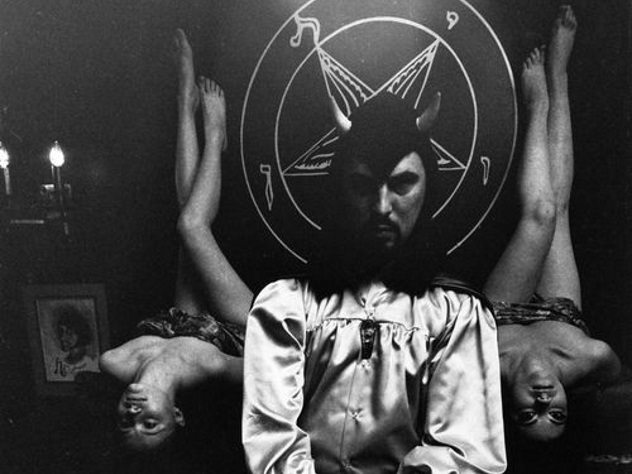
The 20th century came, and the world was becoming increasingly individualistic. Two world wars had caused so much destruction and loss of life, and some saw religion as complicit in much of it. There was an existential upheaval, and people were adopting ideas from philosophers like Nietzsche, such as Jean-Paul Sartre and Albert Camus, with their radical concept of individualism as told through the philosophy of Existentialism. Sartre in particular echoed Nietzsche strongly in his insistence that there was no absolute morality but rather a relative one. While this view is widely accepted today, it was very revolutionary for the time, an era of post-modernism coming out of the age of reason and enlightenment domination. The counterculture in the United States would give birth to the most notable figure of Satanism since, well, Satan himself in his many incarnations and forms: Anton LaVey.
Anton LaVey founded the Church of Satan in 1966, during a time of political and moral turmoil where society seemed ripe and ready for another antihero and the path had already been laid by all the aforementioned figures and concepts. 1960s counterculture provided a perfect breeding ground for the church, with widespread use of drugs and liberal attitudes toward sex. LaVey’s messages borrowed heavily from Nietzsche and preached to followers to indulge in their desires and not shun them. LaVey reignited the flame within us that thirsts for orgiastic sensuality and life-giving vitality. Hence, Baphomet made the perfect symbol, being an ancient figure of fertility and knowledge, and Nietzsche made the perfect philosopher, as LaVey was obsessed with vitality and using life for actually living, rather than rejecting worldly experience.[10]
Drugs, wine, orgies, sex, and theatrics dominated the movement, which still exists today and has influenced many, many parts of Western and particularly American culture, largely through heavy metal and extreme metal. With Anton LaVey, Satan as a figure has transformed from the Hades of the underworld in ancient Greece and the goat-headed Azazel to exactly what Jesus and other early Christians described what he would be: a person, or many people, just like you and I, with a very human form and human desires. It seems that, in this case at least, an ancient prophecy was fulfilled.
I write about dark stuff, horror, and the more twisted side of the human existence. I own and operate many Facebook pages, including Satan Everything , Serial Killer Memes, Murderworks Horror, Beautifull Disturbed, and more.
Read more about the worship of the Dark One on 10 Forms Of Satanism That Exist Around The World and 10 Ways The Church Of Satan Might Surprise You.



